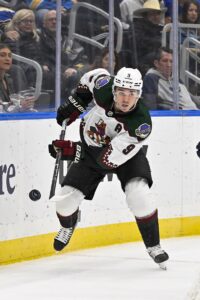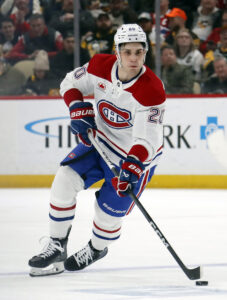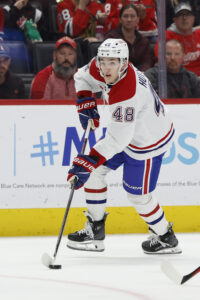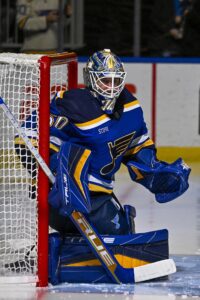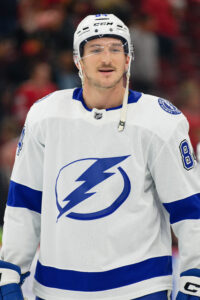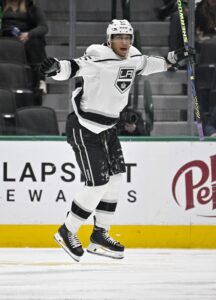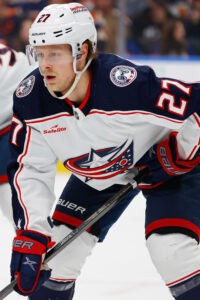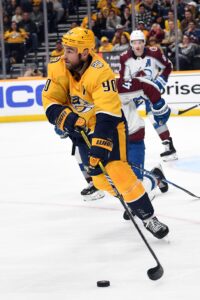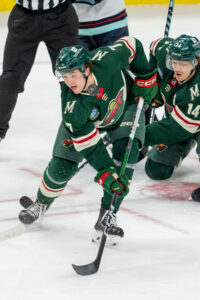Navigating the salary cap is one of the most important tasks for a front office. Teams that can avoid total cap chaos by walking the tightrope of inking players to deals that match their value (or compensate for future value without breaking the bank) remain successful. Those that don’t often see struggles and front office changes.
PHR will look at every NHL team and give a thorough look at their cap situation heading into the 2024-25 season. This will focus more on players who are regulars on the roster versus those who may find themselves shuttling between the AHL and NHL. All cap figures are courtesy of PuckPedia. We begin with a look at the Central Division; next up is Utah.
Utah Hockey Club
Current Cap Hit: $78,079,643 (under the $88MM Upper Limit)
Entry-Level Contracts
F Logan Cooley (two years, $950K)
F Josh Doan (two years, $925K)
F Dylan Guenther (one year, $894K)
Potential Bonuses
Cooley: $3.5MM
Guenther: $850K
Total: $4.35MM
Cooley’s first NHL season was a solid one. They kept him in the top six for most of the year while not frequently exposing him to top checking. While he struggled mightily at the faceoff dot (many rookies do), Utah still views Cooley as their top center of the future. If he can take a step forward offensively this season, he could be a candidate for a long-term extension next summer. If that happens, his camp will likely use Juraj Slafkovsky’s contract (eight years, $60.8MM) as a comparable.
Doan impressed in his first taste of NHL action down the stretch, giving him a shot at earning a full-time spot in camp. But even if that happens, he’ll likely have too small of a track record for an early extension next summer. Guenther, meanwhile, was able to play in the minors last season but played his way into a promotion relatively quickly where he picked up 35 points in 45 games. With just 78 games under his belt, an extension in the coming weeks is unlikely but if he puts up a full season at that level of production, he could push for a long-term deal starting with a seven next summer.
Signed Through 2024-25, Non-Entry-Level
F Nick Bjugstad ($2.1MM, UFA)
F Michael Carcone ($775K, UFA)
D Ian Cole ($3.1MM, UFA)
F Alexander Kerfoot ($3.5MM, UFA)
F Jack McBain ($1.599MM, RFA)
G Karel Vejmelka ($2.725MM, UFA)
Kerfoot was a nice addition by Arizona last summer, giving them a capable two-way pivot who is capable of playing high in the lineup, allowing them to ease Cooley in. If he can have a similar offensive showing this season (45 points), he could push for upwards of $5MM on a multi-year agreement next summer given the consistently high demand for centers. Bjugstad made the decision to return to the Coyotes last summer and it was a good one as he had his best season offensively since 2017-18. While they’re certainly pleased with the performance, his track record is as a player with limited offense. Accordingly, an early extension would be hard to come by as both sides would be better off seeing if his production can be repeatable. If it is, he could come in closer to $4MM next time out.
McBain has become a capable checking center who has chipped in a bit offensively while throwing his body around. That’s a solid profile for a player at this price point. If the upcoming season is similar to these last two, he could double this price tag with arbitration eligibility. Carcone reached 20 goals last season, his first full NHL campaign at the age of 27. Obviously, getting a 20-goal scorer for the league minimum is excellent value but how close he comes to repeating that will dictate if he’s going to stay close to this price tag or easily reach seven figures in 2025-26.
This is the fourth year in a row that Cole has taken a one-year deal with a price point between $2.9MM and $3.1MM. Barring a significant change in his performance, it seems fair to infer that he could be in line for something close to that range next summer as well.
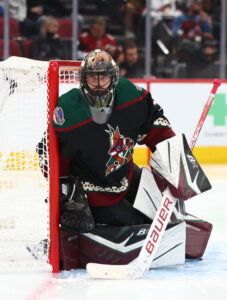 Vejmelka is an interesting case in terms of his free agent value. On the surface, his numbers are rather pedestrian; he has yet to record a save percentage of .900 or better while the lowest GAA of his three-year career is 3.35, set last season. And yet, the general perception around him has been that perhaps on a better team, he’s someone who might be more impactful. With the overhaul Utah has had on the back end this summer, this could be a good test of that theory. If that happens, Vejmelka could conceivably push for a contract in the higher tier of backup or platoon goalies with a price tag approaching $4MM. If that doesn’t happen, however, a small pay cut might be coming his way.
Vejmelka is an interesting case in terms of his free agent value. On the surface, his numbers are rather pedestrian; he has yet to record a save percentage of .900 or better while the lowest GAA of his three-year career is 3.35, set last season. And yet, the general perception around him has been that perhaps on a better team, he’s someone who might be more impactful. With the overhaul Utah has had on the back end this summer, this could be a good test of that theory. If that happens, Vejmelka could conceivably push for a contract in the higher tier of backup or platoon goalies with a price tag approaching $4MM. If that doesn’t happen, however, a small pay cut might be coming his way.
Signed Through 2025-26
F Barrett Hayton ($2.65MM, RFA)
G Connor Ingram ($1.985MM, UFA)
D Michael Kesselring ($1.4MM, RFA)
F Matias Maccelli ($3.425MM, RFA)
F Nick Schmaltz ($5.85MM, UFA)
F Kevin Stenlund ($2MM, UFA)
D Juuso Valimaki ($2MM, UFA)
D Shea Weber ($7.857MM, UFA)
Schmaltz has very quietly been one of the steadier Coyotes in recent seasons, ranging between 58 and 61 points in the last three seasons, two of which saw him over a point per game while dealing with injury trouble. While he’s not a full-time center anymore, he can still play down the middle which will help from a value perspective. Assuming this production keeps up, he should push past the $7MM mark on his next deal. Maccelli, meanwhile, wasn’t quite able to produce at the same level as 2022-23 but he came close, giving Arizona solid value on the first year of his bridge deal. Staying around this level of offensive numbers could put him around the $6MM range on his next contract.
Hayton followed up a career year with arguably his worst one, resulting in what amounts to a second bridge contract. He’ll only have one season of club control left after this contract expires and both sides will be hoping that he can become much more impactful by then. Stenlund had a solid season with Florida, chipping in 11 goals in a limited role which allowed him to double his price tag from a year ago and tack on a second season. This is more on the upper tier for someone who projects as a fourth liner but if he can hang around the double-digit goal mark, he could beat this price tag.
Weber has been on LTIR for the past three years and will continue to be there for the rest of the deal. With Utah having ample cap space, he won’t be a burden on their cap. Valimaki has become a reliable second-pairing defender at a price point well below market value. While the additions could push down his playing time, he could still conceivably double this in 2026. Kesselring spent most of last season in Arizona for his first consistent taste of NHL action. He fared pretty well all things considered but with his limited track record, a bridge deal was the way to go. He’ll have arbitration rights next time out and could double this if he holds onto a regular spot on the third pair.
Ingram has turned into one of the better waiver claims in recent years, going from a third-string option with Nashville to a starter as he played in 50 games last season while leading the league in shutouts. If he continues on that trajectory and becomes a consistent starter, he could push past $5MM two years from now.
Signed Through 2026-27
F Lawson Crouse ($4.3MM, UFA)
D John Marino ($4.4MM, UFA)
F Liam O’Brien ($1MM, UFA)
It took some time but Crouse has emerged as a consistent top-six power forward, hitting the 20-goal mark in three straight years while averaging 183 hits per season in that span. Given the high demand for players like this, Crouse appears to be well on his way to passing the $6MM mark on his next deal. If the cap goes up quickly before 2027, $7MM could be possible if he stays at that level of production. O’Brien had a career year offensively last season while leading the league in penalty minutes. That helped earn him this three-year contract, something that a lot of enforcers don’t typically get. Even if O’Brien struggles, the deal can come off the cap entirely if he’s in the minors, making it a low-risk signing.
Marino was acquired at the draft from New Jersey to help bolster the back end. While he hasn’t been able to get back to the level of production from his rookie year (which largely helped him earn this agreement), he has been a consistent minutes-eater, logging over 20 minutes a night in each of his five NHL seasons while recording 25 points in two of the last three years. For a second-pairing player, that’s solid value.
